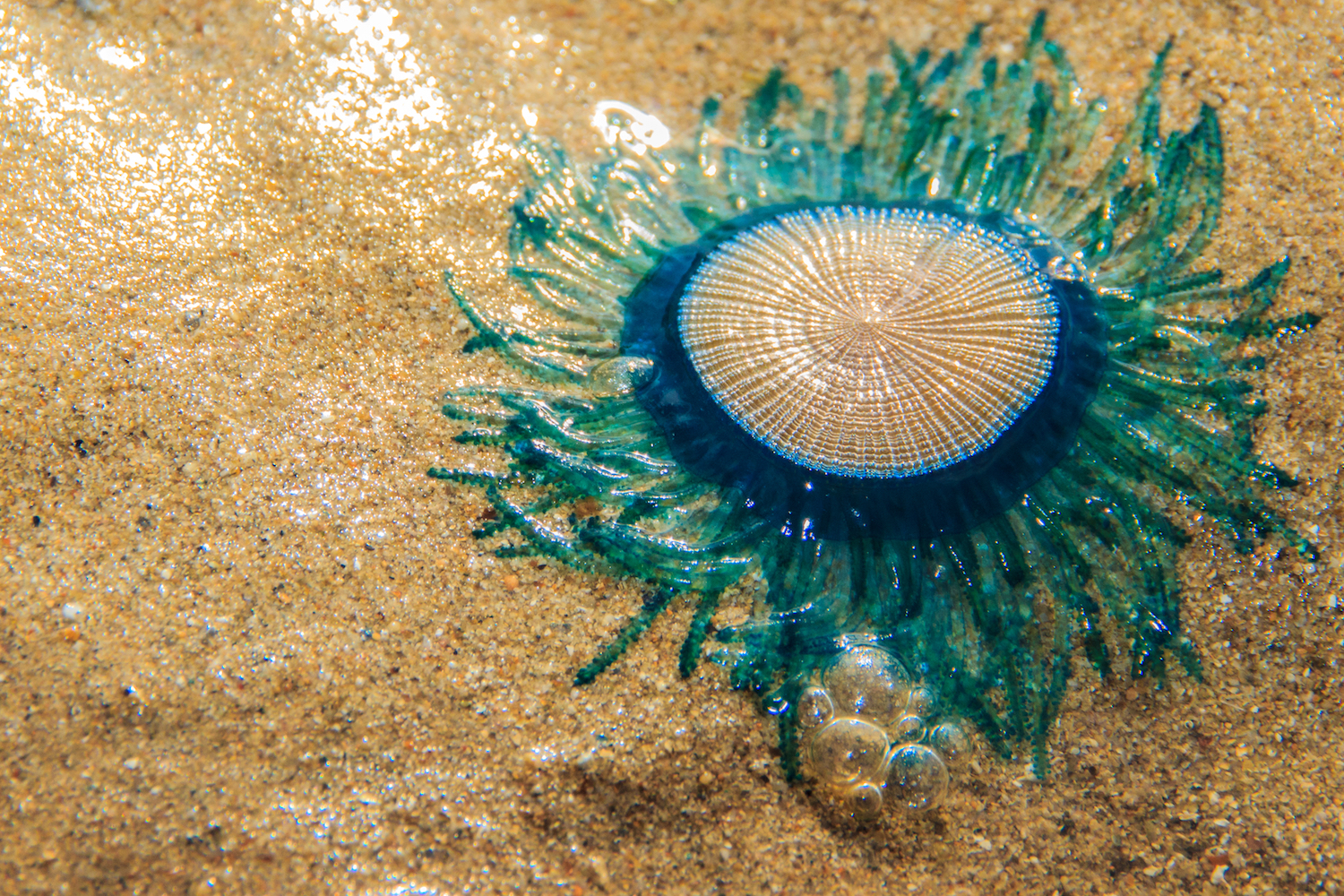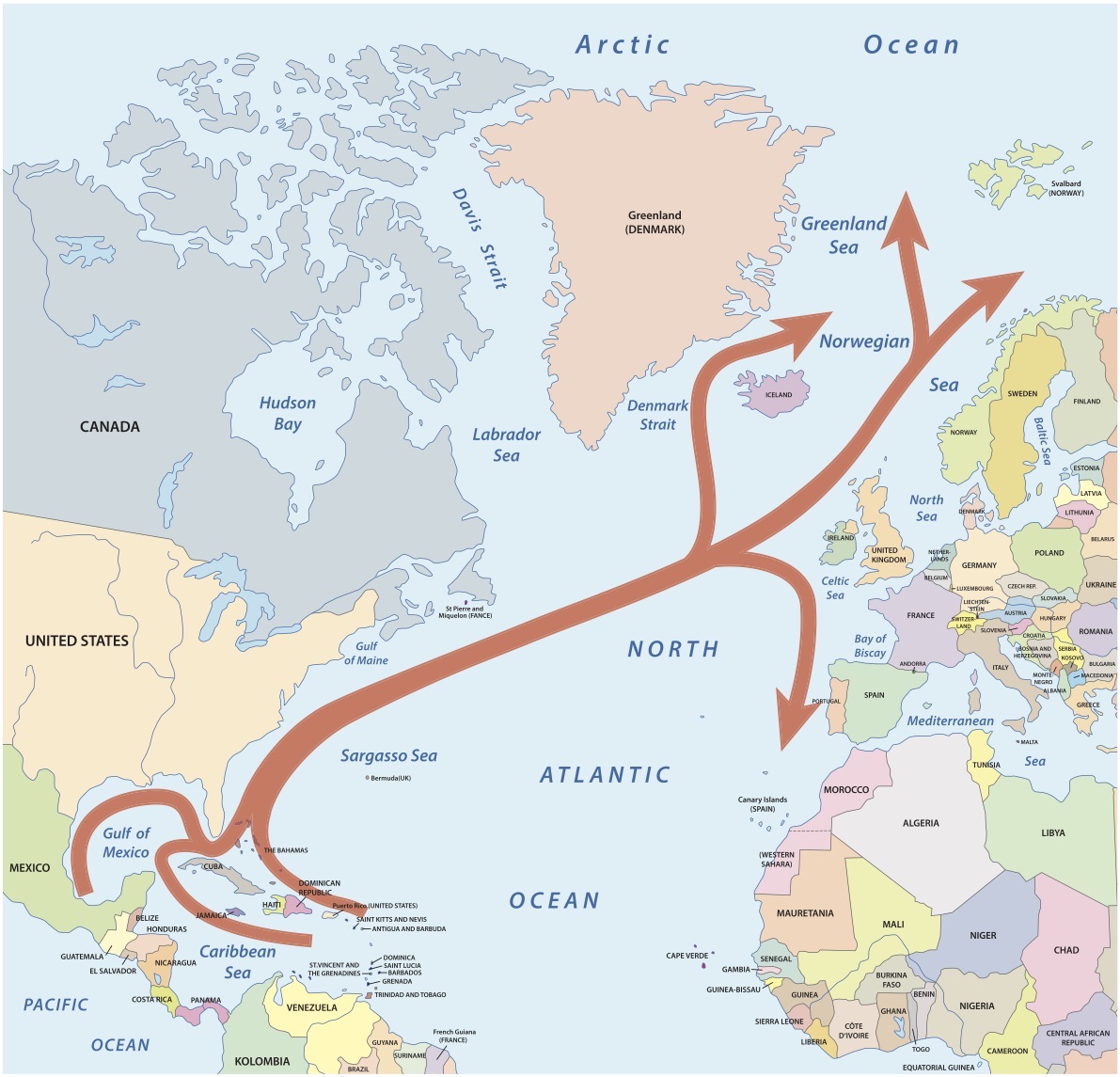Rare, Blue Jellyfish-Like Creatures Wash Ashore in NJ, Puzzling Beachgoers

Weird, brilliant blue creatures with feather-like tentacles are washing ashore on the beaches of New Jersey, surprising beachgoers who aren't used to seeing turquoise blobs dotting the shore, according to news reports.
These jellyfish-like critters are commonly known as blue buttons (Porpita porpita), but they aren't native to the Garden State. Instead, it appears that Hurricane Florence carried the tropical animals out of the Gulf Stream, a powerful current in the Atlantic Ocean, and pushed them northward up the East Coast.
"It's not something I've ever seen before, and I've been walking down that beach since I was 10 years old. I'm 55 now," Holly Horner, a professional wildlife photographer from Egg Harbor, New Jersey, told the Asbury Park Press, after spotting blue buttons on a beach in Brigantine last week. [In Photos: Spooky Deep-Sea Creatures]
Although they look like jellyfish, blue buttons are another type of creature (or rather, set of creatures) altogether. They fall into the scientific class Hydrozoa, whose members are each made up of colonies of hydroids — tiny predators that are related to jellyfish. The most famous hydrozoan is probably the Portuguese man o' War (Physalia physalis), which can deliver a venomous sting so powerful that it can kill fish and even injure humans, according to National Geographic.
But the blue button is not nearly as treacherous as the Portuguese man o' War. Because they have a mild sting, blue buttons can irritate the skin but they're not that dangerous to humans, Paul Bologna, an associate biology professor at Montclair State University in New Jersey, told the Asbury Park Press.
Even so, the blue button's sting is venomous enough to keep the creature well-fed. The round, yellowish-brown "button" part of the blue button is usually about an inch wide and has tentacle-like strands hanging off it. (This button is gas-filled, which helps the blue button float in the water, according to the Encyclopedia of Life.) These strands, or hydroid branches, zap free-floating marine animals known as zooplankton, which the blue button then eats for dinner, according to the National Park Service.

Bologna added that he's seen blue buttons off the Florida coast but never in New Jersey. And he doesn't expect them to survive in the Garden State much longer.
Sign up for the Live Science daily newsletter now
Get the world’s most fascinating discoveries delivered straight to your inbox.
"Most likely, they will all die off when the water temperature drops, so they may hang around for a few more weeks," Bologna told the Asbury Park Press. "In general, they are not dangerous, but like all 'jellyfish,' they do have stinging cells, so caution is always the best bet."
Originally published on Live Science.

Laura is the archaeology and Life's Little Mysteries editor at Live Science. She also reports on general science, including paleontology. Her work has appeared in The New York Times, Scholastic, Popular Science and Spectrum, a site on autism research. She has won multiple awards from the Society of Professional Journalists and the Washington Newspaper Publishers Association for her reporting at a weekly newspaper near Seattle. Laura holds a bachelor's degree in English literature and psychology from Washington University in St. Louis and a master's degree in science writing from NYU.










